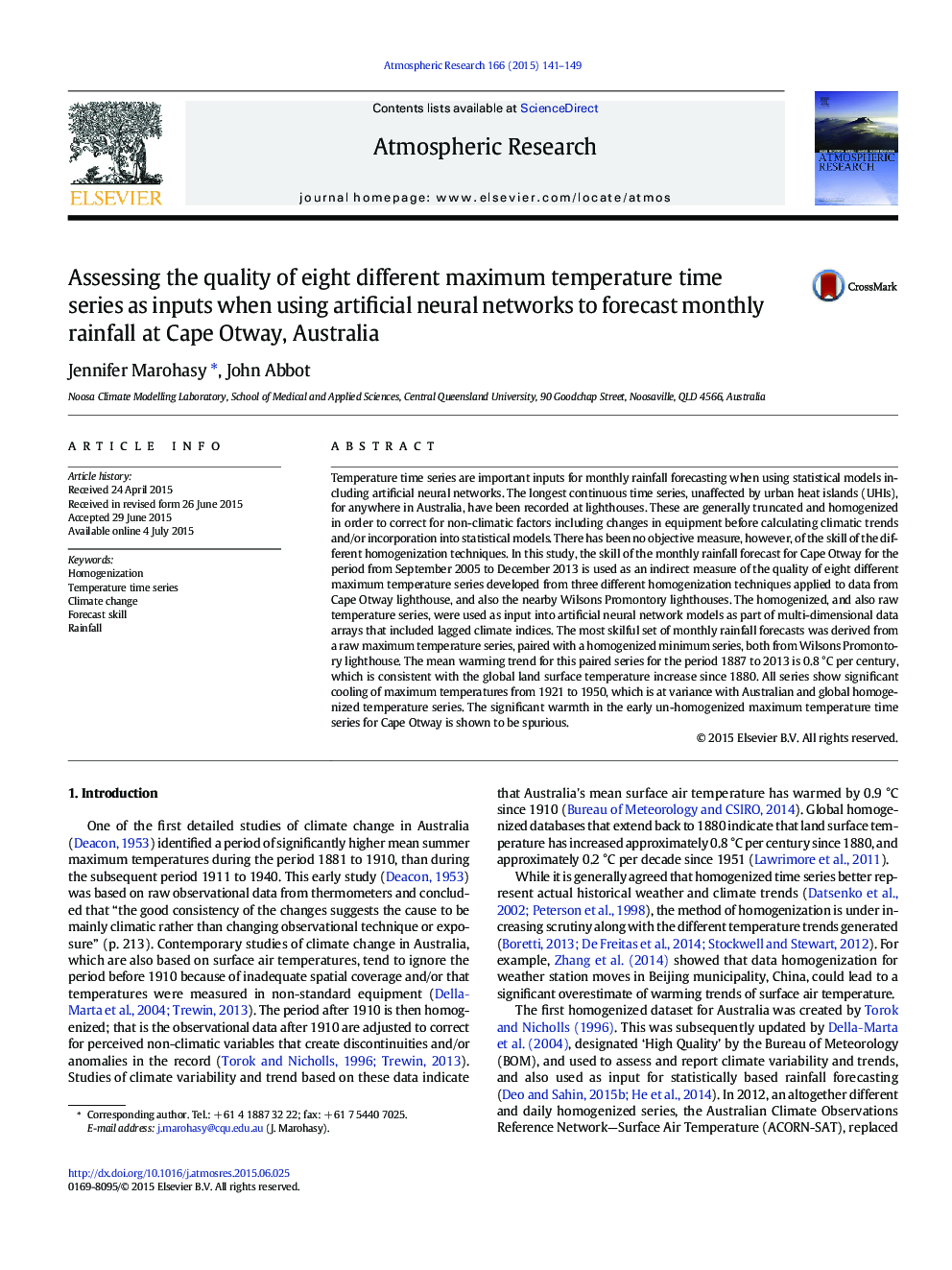| کد مقاله | کد نشریه | سال انتشار | مقاله انگلیسی | نسخه تمام متن |
|---|---|---|---|---|
| 4449735 | 1620510 | 2015 | 9 صفحه PDF | دانلود رایگان |
• Novel technique using ANN rainfall forecasts to assess quality of temperature series
• Most skillful rainfall forecasts from series with warming of 0.8 °C per century
• Least skillful forecast from raw values with significant warmth in early record
• Homogenized and raw maximum temperatures show cooling from 1921 to 1950.
Temperature time series are important inputs for monthly rainfall forecasting when using statistical models including artificial neural networks. The longest continuous time series, unaffected by urban heat islands (UHIs), for anywhere in Australia, have been recorded at lighthouses. These are generally truncated and homogenized in order to correct for non-climatic factors including changes in equipment before calculating climatic trends and/or incorporation into statistical models. There has been no objective measure, however, of the skill of the different homogenization techniques. In this study, the skill of the monthly rainfall forecast for Cape Otway for the period from September 2005 to December 2013 is used as an indirect measure of the quality of eight different maximum temperature series developed from three different homogenization techniques applied to data from Cape Otway lighthouse, and also the nearby Wilsons Promontory lighthouses. The homogenized, and also raw temperature series, were used as input into artificial neural network models as part of multi-dimensional data arrays that included lagged climate indices. The most skilful set of monthly rainfall forecasts was derived from a raw maximum temperature series, paired with a homogenized minimum series, both from Wilsons Promontory lighthouse. The mean warming trend for this paired series for the period 1887 to 2013 is 0.8 °C per century, which is consistent with the global land surface temperature increase since 1880. All series show significant cooling of maximum temperatures from 1921 to 1950, which is at variance with Australian and global homogenized temperature series. The significant warmth in the early un-homogenized maximum temperature time series for Cape Otway is shown to be spurious.
Journal: Atmospheric Research - Volume 166, 1 December 2015, Pages 141–149
